So I’ve had these pictures sitting in my hard drive for over a month now. Yes, I am finally getting off my lazy bum to share it here!
Since the Coventry Cottage is my very fist dollhouse, I feel uncomfortable spending too much money building it since I’ll probably screw up and money is tight for me. Lets just say, I want to get a bit more experience before shelling out the big bucks.
So in attempting to be frugal, I am going with the bare minimum and only work with the items that are in the kit, when possible. Furniture and shingles are included so I was all set in that department. Since siding was not, I opted to simply paint the exterior as you can see from the image above.
I used acrylic paint and thought that it would be enough. But seeing how I am a total NOOB at dollhouses and miniatures, I was horrified at how apparent the edges and gaps were as I was applying the paint!
Another closeup on the ugliness above. I do paint on canvas and clay, but dealing with wood is very new to me, as you can tell.
So what did I do? I ran to the nearest hardware store (Home Depot) and nabbed some supplies to fix this situation. Yeah, I know I said that I don’t want to spend money building dollhouses right now, but I know I will need and use these supplies on other projects, so its worth it. Pictured above is some spackling and wood filler to smooth out the corners and fill in the gaps, painter’s paper for the shingles and covering the floor, the small sampler can for the trims, and the big can of paint was some leftover primer from when I painted my room a few years ago.
The picture above shows the spackling work in progress. I initially used my clay tool that has a flat head to apply the spackle, but I found that it was easier to just use my fingers.
The spackle had to be sanded down. It was a dusty and messy process. Masks are recommended.
Here’s that leftover primer I mentioned. It’s ready to be painted on the house!
And tah dah! It’s painted and for the most part, you can’t see the wood grain. I know its still not 100% perfect in terms of clean edges (you can see some of the tabbed areas), but it is leaps and bounds better than simply using the acrylic paint.
Even though I had trouble fitting some pieces together when building the kit, this was the most frustrating experience of it so far.
But I am still quite pleased with how its coming along.
What do you think? Any suggestions on other inexpensive alternative methods for finishing a dollhouse exterior?

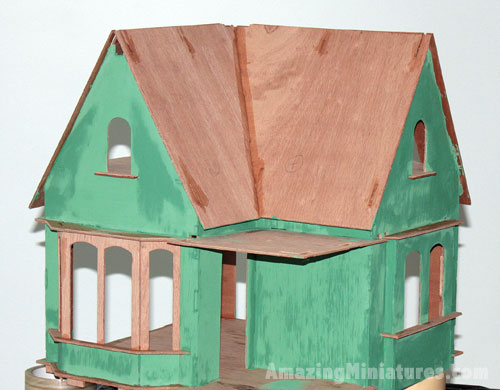
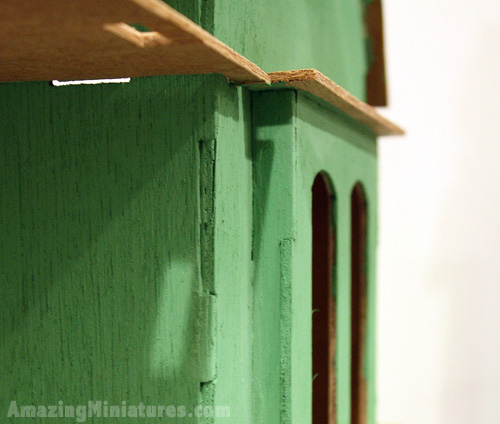
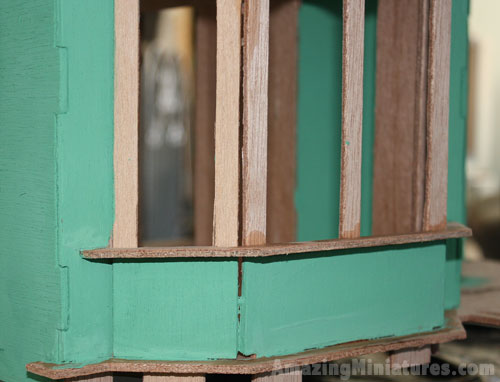
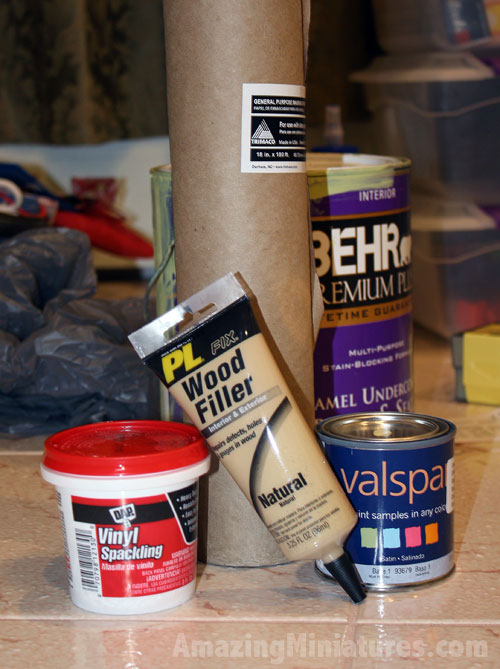
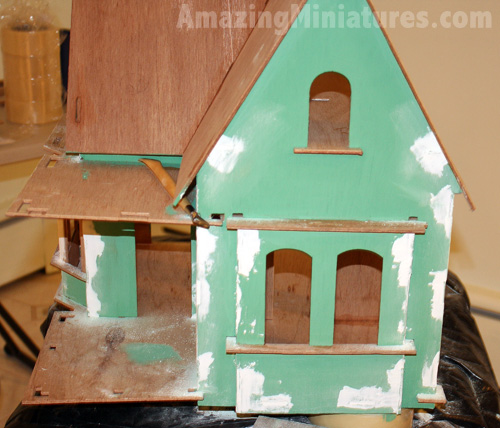


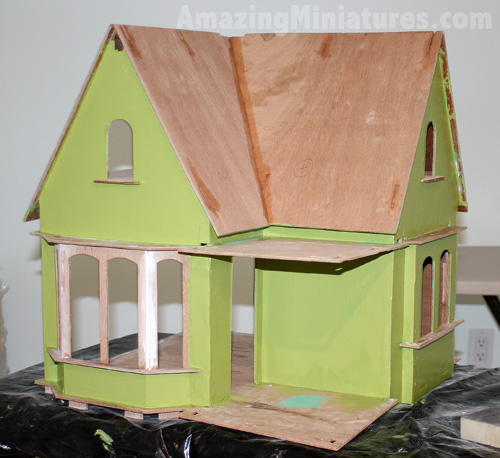
Enjoyed your Coventry Cottage blog…..I’m starting the same DH, only mine is a 20yo kit & I’ve run into some problems I didn’t anticipate…..
In the early 80s I had a hobby shop & built DHs for clients, then sold out, but had put a couple of kits aside for future gifts, anyway, I’ve finally gotten around to the Coventry kit, though I’m spending a lot of time gluing & spackling parts before I can use them…the thin mahogany plywood that this kit was originally stamped from has delaminated in some places, requiring a lot of care punching the pieces out of their sheets…..when I built Greenleaf kits 20 years ago, they punched out easily from the front, but with the delamination, I’ve found it better to carefully score the smaller pieces, with a utility or X-acto knife on the back side, then pushing the pieces through from the back side.
Before trying to glue or place any parts in place, I am looking over each piece & using a thin coat of wood glue to repair the laminations, then clamping them with Irwin brand clamps or other clamps that have plastic grips…it’s easy to remove these types of grip ends from parts where glue has squeezed out. After the glue, used to repair the laminations, has dried, I look the parts over & carefully do any edge or surface filling with spackling, before setting them aside to dry…usually 24 hours. I normally let the glue set 24 hours also.
Just thought others working with old kits could save themselves a lot of problems they probably would not be aware of otherwise.
Thanks for your insight Walt! Older kits do require some special care!
I am stuck on the roof.. cannot figure it out.
What can’t you figure out? The shingles? Or the way to put it on? Honestly, it’s been so long since I worked on this house (and I had sold it) that I don’t think I remember enough to be helpful. Sorry! Good luck though!
I am very thankful for your progress pictures. I have just received a partially-finished Coventry Cottage from the family of a very dear miniaturist friend who recently passed away. I hope I can do it justice because what she had accomplished is beautifully done with her exquisite taste. Luckily, everything to finish was passed on to me. Although I have been working with miniatures for twenty years, I will still need luck, patience and resolve.